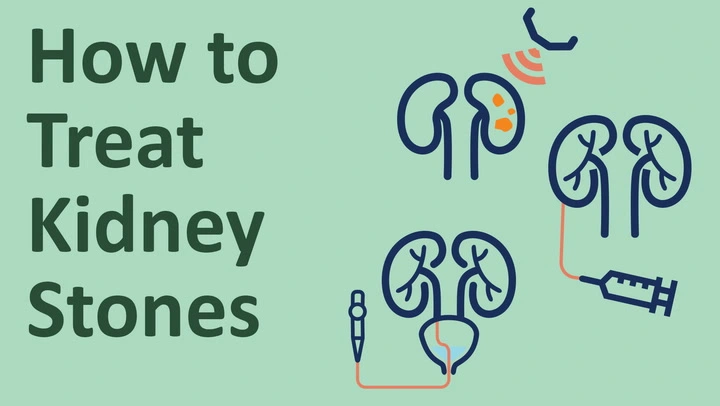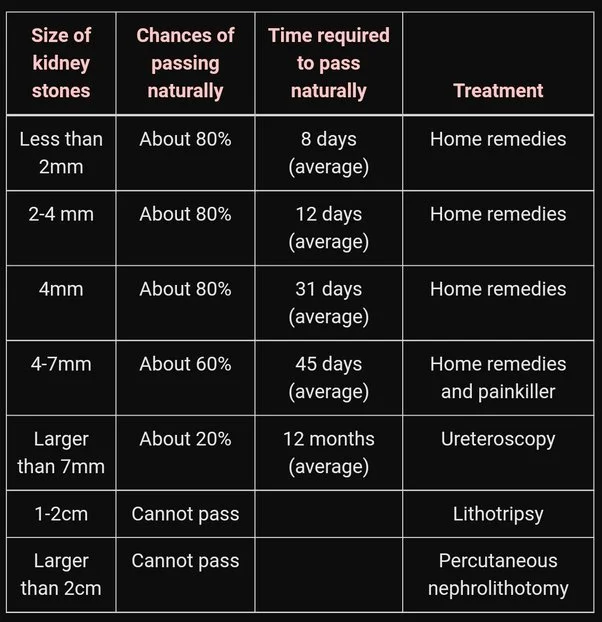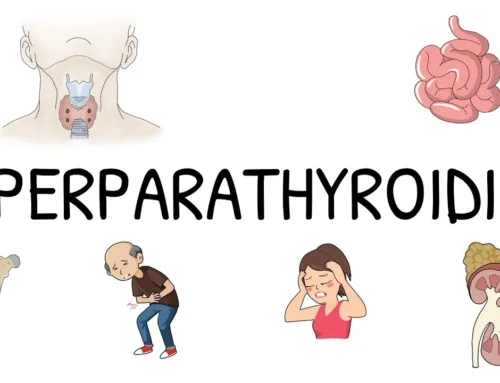Kidney stones are small, hard mineral and salt deposits in the kidneys. They can vary in size, with some reaching important dimensions.
This article will focus on kidney stones, including their symptoms, causes, and available treatment options. Our main focus will be determining if injections can effectively remove a 38 mm kidney stone.

What Are Kidney Stones?
Kidney stones, or renal calculi, are solid formations that develop in the kidneys. These stones can vary in size, varying from tiny grains to larger, more complex structures. They can contain various substances, such as calcium, oxalate, uric acid, or struvite.
Symptoms of Kidney Stones:

The presence of kidney stones often leads to several distinctive symptoms. These can contain:
- Severe pain in the back,
- Abdomen, or groin,
- Blood in the urine,
- Frequent urination,
- A persistent urge to urinate,
- Cloudy or foul-smelling urine,
- Discomfort while urinating.
The intensity and type of symptoms experienced may depend on the kidney stone’s size and location.
What Causes Kidney Stones?
The formation of kidney stones can be attributed to various factors. Insufficient hydration, resulting in concentrated urine, is a common cause. Additionally, excessive substances like calcium, oxalate, or uric acid in the urine can contribute to stone formation. A family record of kidney stones, certain medical conditions like urinary tract infections or metabolic disorders, and dietary habits such as a high sodium or animal protein intake can also play a role in their development.
Kidney Stone Treatment:
When treating kidney stones, the approach can differ depending on aspects such as the size and location of the stone, the severity of symptoms, and the patient’s overall health. Smaller kidney stones measuring less than 5 mm in diameter may pass through the urinary tract naturally, aided by increased fluid intake and appropriate pain management.
38 mm kidney stone treatment
Injections are commonly used for certain kidney stone treatments, such as lithotripsy or shock wave therapy. Still, the effectiveness of these treatments depends on the size, location, and composition of the stone. A 38 mm kidney stone is large; typically, it cannot be removed with injections alone.
More invasive procedures are usually necessary to remove a stone of that size. One option for kidney stone removal is percutaneous nephrolithotomy (PCNL), which entails creating a small incision in the back and inserting a tube directly into the kidney for stone removal. Another approach is ureteroscopy, which involves passing a thin tube through the urethra and bladder to access the stone in the kidney. Specialized instruments break up or remove the stone during this procedure.
It’s important to consult a urologist who can evaluate your situation and recommend the most appropriate treatment for your kidney stone. They will consider factors such as the stone size, location, composition, and overall health before deciding on the best action.
Composition of a Kidney Stone:
The composition of a kidney stone can influence the treatment options available. Calcium stones, the most common type, can be treated with medication, dietary changes, and in some cases, extracorporeal shockwave lithotripsy (ESWL), a non-invasive procedure that uses shock waves to break up the stone. Other stones, such as uric acid or struvite stones, may require different approaches.
How Does a Kidney Stone Pass?
The passage of a kidney stone can cause discomfort and pain. It usually involves the stone moving through the urinary tract, starting from the kidneys and progressing towards the bladder, until it is eventually expelled from the body through urine. This process can take several days to weeks, and maintaining proper hydration is vital to support the smooth passage of the stone.
Kidney Stone Size Chart in mm and treatment in the USA:

The available treatment options for kidney stones can differ based on the size of the stone. Kidney stone size is commonly measured in millimeters (mm) in the United States. A 38 mm kidney stone is considered large and may not pass naturally without intervention. Larger stones require medical intervention, such as surgical removal or minimally invasive procedures like percutaneous nephrolithotomy (PCNL) or ureteroscopy with laser lithotripsy.
Conclusion:
While smaller kidney stones can often pass naturally with proper hydration and pain management, larger stones, such as a 38 mm stone, usually require medical intervention for effective removal. Injections alone are unlikely to be sufficient in this scenario. Seeking advice from a healthcare professional is crucial to evaluate the individual case and determine the most appropriate treatment option for effective management of kidney stones.




Leave A Comment